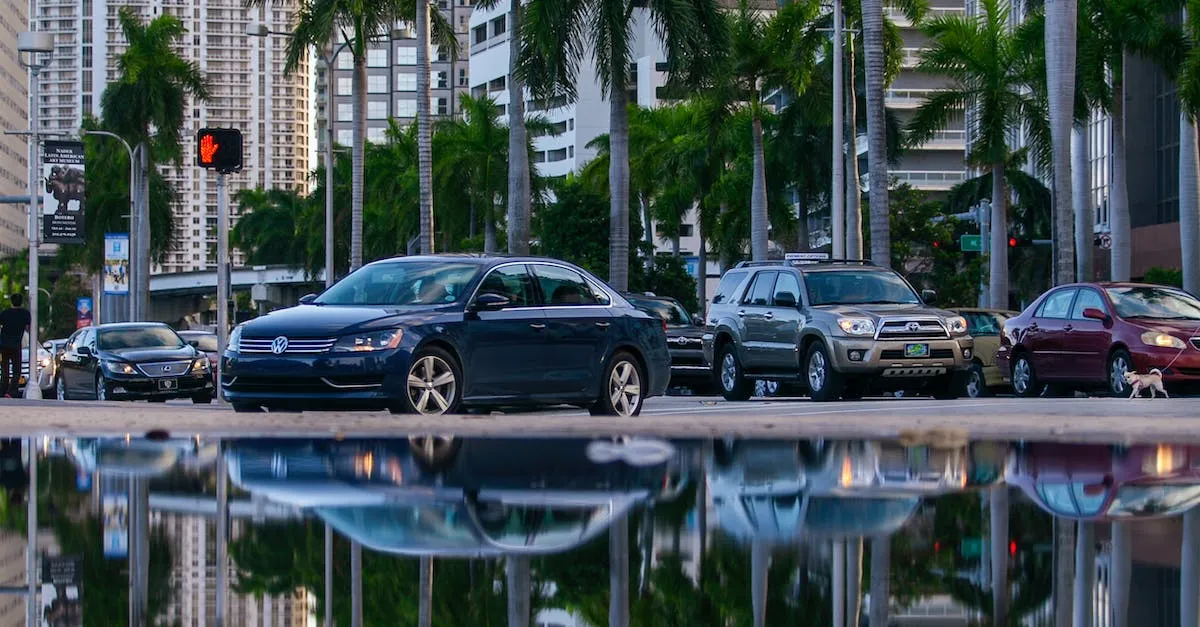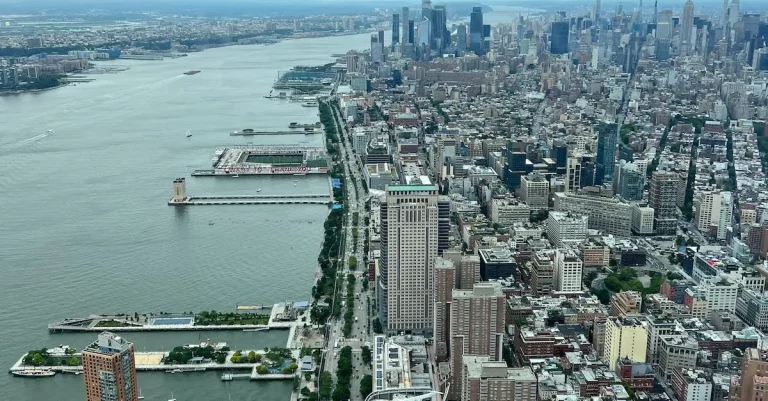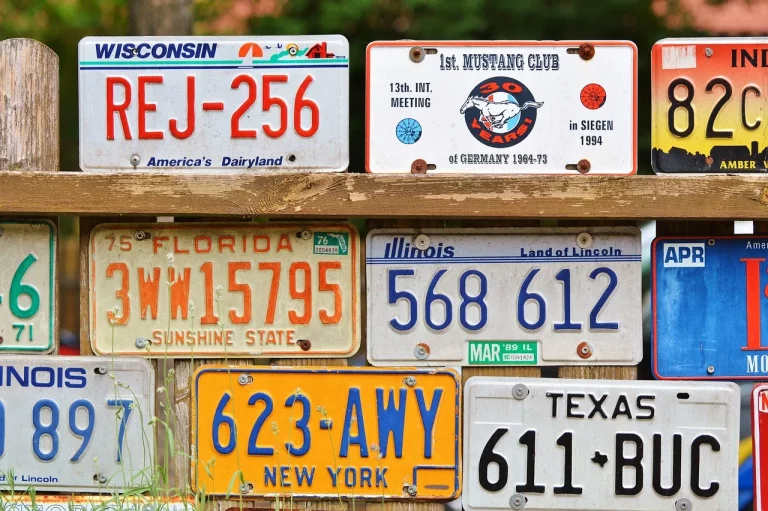Do You Need A Car In Miami?
With its beautiful beaches, vibrant nightlife, and diversity of neighborhoods, Miami is a popular place to live and visit. But navigating this sprawling coastal city also poses transportation challenges. So do you really need a car to get around Miami?
If you’re short on time, here’s a quick answer: Having a car in Miami is not an absolute necessity, but it makes getting around much more convenient. Miami’s public transportation is limited, so relying solely on buses, trains, rideshares, etc. can be frustrating.
Miami’s Public Transportation System
When it comes to getting around Miami, residents and visitors have several options to choose from. One of the most convenient and cost-effective ways to navigate the city is through its public transportation system.
Miami’s public transit system consists of Metrorail, Metromover, Metrobus, and the newer Brightline higher-speed rail.
Metrorail, Metromover, and Metrobus
Metrorail is a rapid transit system that covers a large part of Miami-Dade County. It operates on a 25-mile dual-track elevated system, with 23 stations serving the downtown Miami area, Miami International Airport, and other key locations.
With trains running every 15 minutes during peak hours, it provides a reliable way to travel around the city.
Complementing the Metrorail is the Metromover, an automated people mover system that operates within the downtown Miami area. It is free to use and connects to major attractions, shopping centers, and residential areas. The Metromover is a convenient option for short trips within the city center.
In addition to the rail systems, Miami also has an extensive Metrobus network. Metrobuses cover more than 90 routes throughout Miami-Dade County, providing access to neighborhoods, shopping centers, and other destinations. The buses are equipped with bike racks and offer wheelchair accessibility.
Brightline higher-speed rail
The Brightline higher-speed rail is a newer addition to Miami’s public transportation system. It connects Miami with Fort Lauderdale and West Palm Beach, offering a faster and more comfortable way to travel between these cities.
The trains are equipped with amenities such as Wi-Fi, power outlets, and comfortable seating, making the journey enjoyable for passengers.
Limitations of public transit
While Miami’s public transportation system is a great option for many, it does have some limitations. One of the main challenges is the city’s sprawling nature, which makes it difficult for public transit to reach every corner.
Some neighborhoods may have limited or no access to public transportation, making owning a car a more practical choice.
Another limitation is the dependence on fixed schedules. Although the Metrorail and Metrobus systems have frequent service during peak hours, off-peak hours and weekends may have reduced frequency. This can be inconvenient for those who need to travel outside of regular commuting times.
Despite these limitations, Miami’s public transportation system offers a viable alternative to driving a car. It can help reduce traffic congestion, lower carbon emissions, and save on parking costs. Whether you’re a resident or a visitor, exploring the city’s public transit options can be a great way to experience Miami while minimizing your environmental impact.
Taxis, Rideshares, and Shuttles
Availability of Uber, Lyft, taxis
When it comes to getting around Miami, residents and visitors have several convenient options to choose from. The availability of rideshare services like Uber and Lyft has significantly improved transportation in the city.
With just a few taps on your smartphone, you can easily request a ride and be on your way to your destination. Both Uber and Lyft have a strong presence in Miami, making it easy to find a ride no matter where you are in the city.
Taxis are also readily available in Miami. Yellow taxis can be found at designated taxi stands throughout the city, as well as hailed on the street. Taxis are a reliable option for those who prefer the convenience of a traditional cab service.
However, it’s worth noting that rideshare services like Uber and Lyft tend to be more cost-effective and often provide a more comfortable and modern transportation experience.
Public rideshare services
In addition to Uber and Lyft, Miami also has its own public rideshare service called “Freebee.” Freebee is a unique and innovative transportation option that offers free rides within specific neighborhoods in Miami.
These electric vehicles can be easily hailed through the Freebee app and provide a fun and eco-friendly way to explore the city. Freebee services are especially popular among tourists and locals who are looking for a convenient and cost-free mode of transportation.
Furthermore, Miami-Dade County offers a public transit system called the Metrorail and Metrobus. These services provide an affordable and reliable way to navigate the city, with routes that cover a wide range of destinations.
While not as flexible as rideshare services, public transportation can be a great option for those who want to explore Miami on a budget.
Hotel, airport, and cruise shuttles
Many hotels in Miami offer complimentary shuttle services to popular attractions, shopping centers, and beaches. These shuttles are a convenient option for guests who prefer to leave the driving to someone else and want to avoid the hassle of finding parking.
Additionally, both Miami International Airport and the Port of Miami offer shuttle services to and from various locations in the city. These shuttles are a great option for travelers who want a hassle-free way to get to their hotel or cruise ship.
Walkability in Miami
Miami, known for its sunny weather and vibrant culture, is a city that offers a variety of transportation options for residents and visitors alike. One of the factors to consider when deciding whether you need a car in Miami is the walkability of the different neighborhoods in the city.
Let’s explore the walkability of Miami Beach, the Downtown/Brickell area, and the suburban neighborhoods.
Miami Beach
Miami Beach is a popular tourist destination known for its beautiful beaches, art deco architecture, and lively nightlife. The walkability of Miami Beach is one of its greatest assets. With a walk score of 74 out of 100, it is considered a “very walkable” neighborhood.
Residents and visitors can easily navigate the streets and enjoy the vibrant atmosphere on foot. From strolling along Ocean Drive to exploring the shops and restaurants on Lincoln Road, walking is a convenient and enjoyable way to get around Miami Beach.
Downtown/Brickell area
The Downtown/Brickell area is the bustling business district of Miami. It is home to numerous high-rise buildings, corporate offices, and luxury condos. The walkability of this area is also quite favorable, with a walk score of 86 out of 100, making it a “walker’s paradise.”
Residents and professionals working in the area can easily walk to their destinations, whether it’s grabbing a coffee, dining at a trendy restaurant, or attending a meeting. The presence of sidewalks, pedestrian-friendly streets, and access to public transportation make walking a convenient option in this part of Miami.
Suburban neighborhoods
While the walkability of Miami Beach and the Downtown/Brickell area is impressive, the same cannot be said for all of Miami’s suburban neighborhoods. Many of these neighborhoods were designed with a car-centric mindset, with wide streets and limited sidewalks.
However, there are some suburban neighborhoods that have made efforts to improve walkability. For example, Coral Gables, located southwest of Downtown Miami, has invested in creating pedestrian-friendly streets and sidewalks, making it easier for residents to walk to nearby shops, parks, and restaurants.
It’s important to note that while walkability is a key factor to consider, it may not be the sole determining factor in whether you need a car in Miami. Other factors such as your lifestyle, commute, and access to public transportation should also be taken into account.
Ultimately, the decision to own a car in Miami will depend on your individual needs and preferences.
Biking as a Transportation Option
When it comes to transportation options in Miami, biking is gaining popularity among residents and tourists alike. With its sunny weather and flat terrain, biking offers a convenient and eco-friendly way to get around the city.
Prevalence of bike lanes and paths
Miami has made significant efforts to improve its biking infrastructure in recent years. The city has invested in the construction of bike lanes and paths, making it safer and more accessible for cyclists.
According to a report by the Miami-Dade County Department of Transportation and Public Works, there are currently over 85 miles of bike lanes and paths in Miami, with plans for further expansion in the future.
This extensive network of bike lanes and paths not only promotes cycling as a mode of transportation but also encourages a healthier and more active lifestyle for residents. It provides cyclists with dedicated routes, separated from vehicular traffic, ensuring their safety on the roads.
Bike sharing programs
In addition to the bike lanes and paths, Miami also offers bike sharing programs that provide an affordable and convenient option for those who do not own a bike. Companies like Citi Bike and LimeBike have set up stations throughout the city, allowing users to rent a bike for a short period of time and return it at any designated station.
This initiative has been well-received by both locals and tourists, as it allows them to explore the city at their own pace while avoiding traffic congestion and parking hassles. It’s a great way to enjoy the beautiful sights of Miami and get some exercise at the same time.
Challenges biking in Miami
While biking in Miami has its advantages, there are also some challenges that cyclists may face. One of the main challenges is the hot and humid weather, especially during the summer months. Cyclists are advised to stay hydrated and wear appropriate clothing to protect themselves from the sun.
Another challenge is the lack of awareness and respect from some drivers. Although there are dedicated bike lanes, some drivers may not be accustomed to sharing the road with cyclists. It’s important for both cyclists and drivers to follow the rules of the road and practice mutual respect to ensure a safe and enjoyable biking experience.
Car Ownership Considerations
Costs of owning a car
When considering whether you need a car in Miami, one of the first things to think about is the cost. Owning a car comes with various expenses, including purchasing the vehicle, insurance, fuel, maintenance, and parking fees.
According to a study conducted by the American Automobile Association (AAA), the average cost of owning a car in the United States is around $9,000 per year. However, these costs can vary depending on factors such as the type of car, insurance rates, and frequency of use.
Parking availability
Miami is a bustling city with a high population density, which means finding parking can be a challenge. Depending on where you live or work, you may have to pay for parking or face limited options. In downtown Miami, for example, parking fees can range from $5 to $20 per hour.
Additionally, finding street parking can be difficult, especially during peak times. It’s worth considering if you have access to free or affordable parking options before deciding to own a car in Miami.
Navigating Miami freeways
Miami is known for its busy freeways, such as I-95 and the Dolphin Expressway. While having a car can provide convenience and flexibility, it’s important to consider the traffic conditions and the stress of navigating these freeways.
Rush hour traffic in Miami can be overwhelming, with long commute times and frequent congestion. Public transportation, such as the Metrorail and Metrobus systems, may be a viable alternative for those who want to avoid the hassle of driving on these congested roads.
Conclusion
Miami’s spotty public transit, spread out neighborhoods, and hot climate make owning a car very useful. However, living downtown or sticking mainly to Miami Beach could reduce the need for a personal vehicle.
Consider your lifestyle, budget, and where you’ll be commuting before deciding whether bringing a car to Miami is worth the expense and hassle. With some strategic planning, you may be able to rely on walking, biking, Uber, public transit, and the occasional rental car instead.








